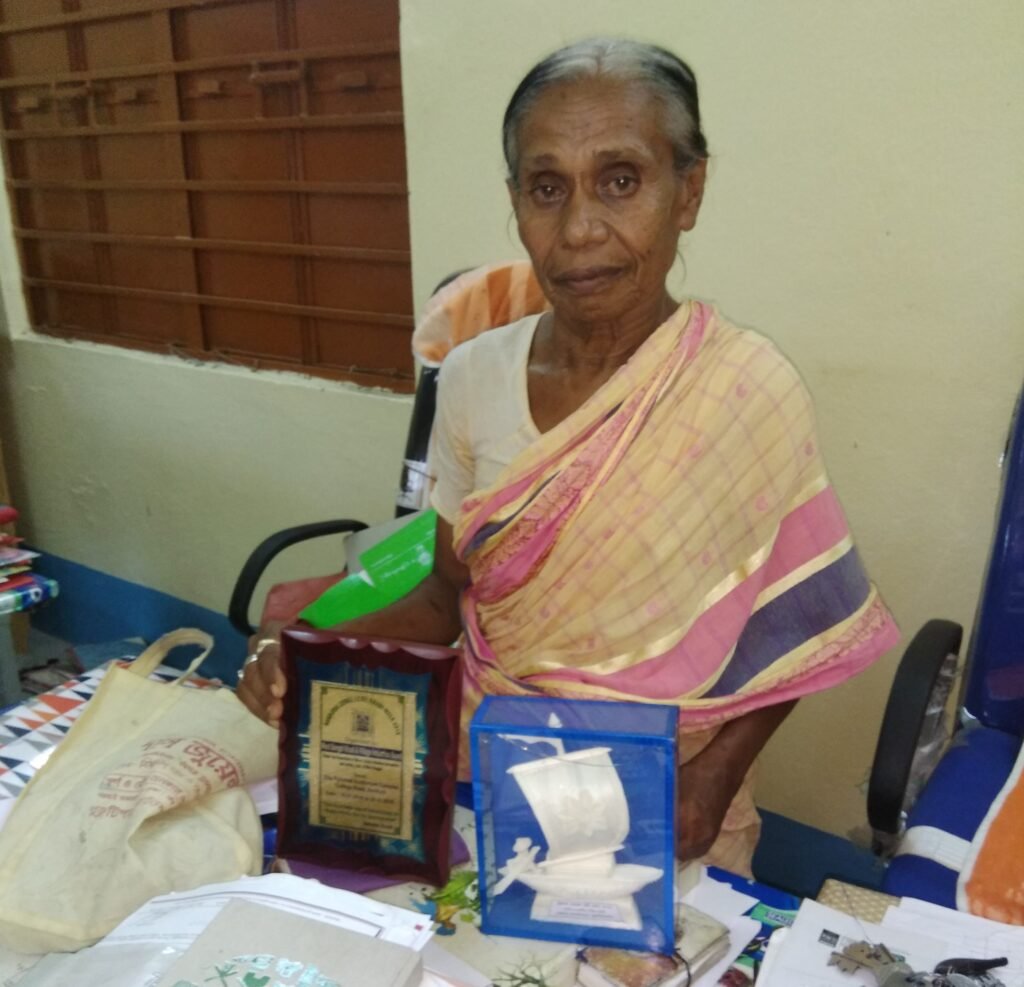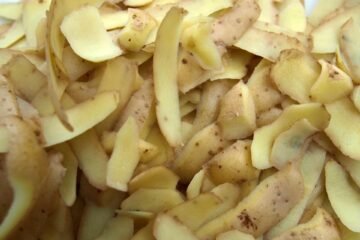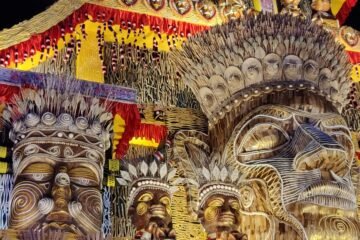The Two Sides of Rain
Our quest for Kantha Embroidery had an unexpected beginning.
I always welcome the sight of rain with mixed feelings— on one hand, the very first shower of the season seems to be like nature cleansing itself of all the dust thrown at it by summer. It’s like someone has enhanced the picture quality of earth, and all the colors become more bright and vivid.
On the other, more practical, hand, we needed to travel around 150 km by bike today to visit Bolpur district of West Bengal. In the rain. That was not going to be an easy task. But nevertheless, we donned our raincoats, on-boarded our bike and started our journey.
An Unfruitful Beginning
The roads were mushy, and the fresh cool air kept our spirits up as we reached the Bolpur bazaar. I had seen a number of handmade items in the bazaar years ago, and had come to investigate further about them. The market was full of a vivid assortment of wooden craft and miscellaneous items like bags, earrings and mats. It was a treat to see the bustling market, especially the local Karam dance performance happening on one side of the road.
We looked at the products closely, enchanted by their rusticity and innovative use of local resources. However, none of them seemed to be the kind of products we wanted to showcase on Rachnakar. Disappointed, I called up my co-founders to tell them that this cluster visit was going to be unproductive.

A Change in Luck
It is at times like these that teamwork really works out. My teammates immediately did some research and found out an artisan cluster just 35km away from Bolpur town, in a village near Bansatarah. They gave me the numbers of six female artisans who practised the art of Kantha embroidery and we saw that Afrunessa Begum lived closest to our present location. Thus, we called one up. However, she did not pick up the phone. Nonetheless, our spirits were re-lifted, we took off on our bike again to search for Afrunessa Begum.
New Surroundings, New People
The most astonishing thing about India is how quickly the surroundings change when one moves from urban to rural areas. As we started off on the road again, there was a distinctive change in the environment. The air became cooler and cleaner. Instead of cemented houses, we could see paddy fields around us looking refreshingly green against the glistening gray of the rain-drenched roads. Technology changes, because Google Maps is works well for the larger city roads. But when it comes to the narrow rural bylanes, it is more advisable to depend on the age-old practice of asking locals. However, language also changes. So the dialect of the people became purer, and it became increasingly difficult for us to understand them when we stopped for directions.
Thankfully one thing doesn’t change— the will of Indians to help each other. No matter the difference in language, they will try their hardest to understand your problem and help you out with it. And that is how we finally reached the artisan village.
The Local Perspective
Now that we had found the village, our first stop was at a small tea shop where we could sit and call the Kantha embroidery artisan Afrunessa Begum for her address. We tried her number again, but much to our devastation, the call went unanswered yet again. Feeling a little panicked, we asked the tea shop owner,
“Do you know Afrunessa Begumji?”
“Who? What?”
“She is an artist who works on Kantha work.”
“Kantha? What is that?”
“It is a type of stitching-embroidery”
“Oh. Yes, I know her. She lives there”, he said, pointing to a white and blue building in the distance.
It suddenly struck me how different local knowledge and language is to the local community. For the world, Afrunessa Begum is an expert in the famous Kantha work— a product which has received the Geographical Indications certification from the Government of India. But for the local community, everything is simple. It is just silai-kadayi ka kaam.
Meeting the Kantha Embroidery Rachnakar Artisan
We soon headed towards the blue and white building the tea shop owner had pointed us to. For a small village, the building was an impressive double-storeyed one.
At the entrance we met a gentle diminutive looking elderly lady. This was Afrunessa Begum. She is said to be an expert in Kantha work, having practiced it for decades and winning accolades for it. However, the air of humility around her was astounding. We introduced ourselves and explained to her how we are meeting grassroots artisans and trying to connect them to urban India. She spoke hesitantly in a dialect of Bangla, doubtful that we would understand, but I assured her that we spoke a little bit of Bangla ourselves too. Relieved, she showed us around the head office.

The Head Office
The head office was surprisingly well equipped. It had important office facilities like a washing machine (for washing kantha cloth) and laptop. There was a designer who had come in to guide Afrunessa Begum on new Kantha work designs. All these facilities had been made with the support of Khadi and DCIM. There even was a canteen which served food to all the local women Afrunessa Begum was training to become Kantha artisans. Soon, we sat down to talk about the rachnakar, Afrunessa Begum herself.
About Afrunessa Begum
Afrunnessa Begum has been practicing the artform kantha work since 1972. In five decades of her hardwork, she has not only achieved self-sufficiency for herself, but has also helped 450 other women in achieving financial independence.
She does this by training them in kantha work, as well as helping them set up their boutiques and stores. She never got married and devoted her whole life to the promotion of Kantha as well as to the artisans. In fact, the land on which the building of her NGO stands has been donated by herself. As Afrunnessaji said “Mera aur hai hi kaun? Yehi sab toh hain mere apne.”
Indeed, I saw many young girls in their late twenties working with her. One of them was a single mother. She was barely literate and had to depend on others to make ends meet. It was with Afrunessa Begum’s training that she now has the confidence and ability to bring up her children on her own. She takes her own decisions and uses her hard earned money to educate her children properly.
PS: As per our policy, photograph and story has been published with due permission from the artisan.
Kantha Embroidery
Finally, of course, Afrunessa Begum proudly showed us the various products they make with kantha embroidery. Soon, a flurry of stoles and saris appeared before us, embellished with graceful and delicate embroidery. The base cloth can be made by both powerloom or handloom, with the former being favoured due to lower cost. We saw stoles with branches, flowers and leaves being delicately depicted on them through thread, a sari with a mosaic differently coloured leaves. The masterpiece however, was a dupatta with a full coverage flower patterns on it. It was hard to even fathom that human hands could have made something so beautiful and so flawless!
Apart from these traditional products, Afrunessa Begum’s society has also started working on non-traditional items like cushion covers, table cloth and curtains for more visibility. Design and product ideas are given to them by KVIC.
Following are some of her Kantha Embroidery creations:
End of the Journey
Finally, of course, Afrunessa Begum proudly showed us the various products they make with kantha embroidery. Soon, a flurry of stoles and saris appeared before us, embellished with graceful and delicate embroidery. The base cloth can be made by both powerloom or handloom, with the former being favoured due to lower cost. We saw stoles with branches, flowers and leaves being delicately depicted on them through thread, a sari with a mosaic differently coloured leaves. The masterpiece however, was a dupatta with a full coverage flower patterns on it. It was hard to even fathom that human hands could have made something so beautiful and so flawless!
Apart from these traditional products, Afrunessa Begum’s society has also started working on non-traditional items like cushion covers, table cloth and curtains for more visibility. Design and product ideas are given to them by KVIC.


